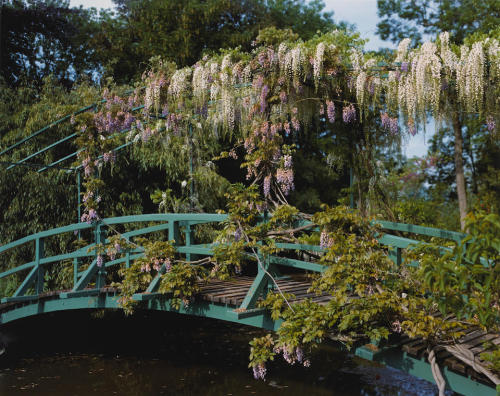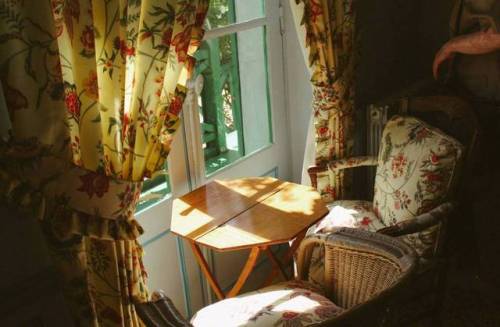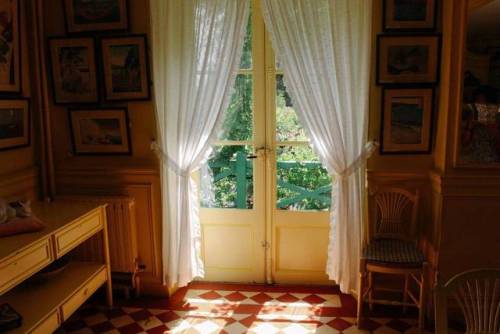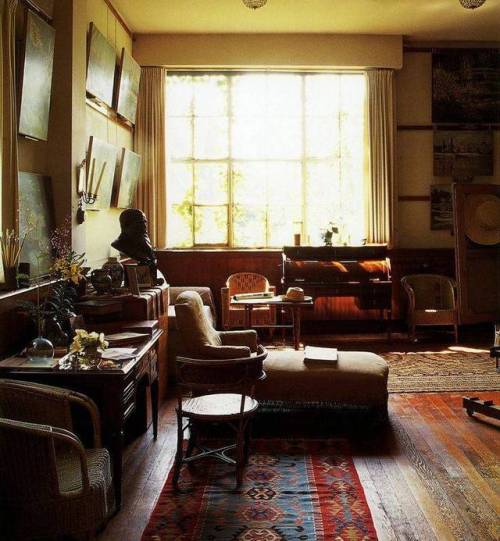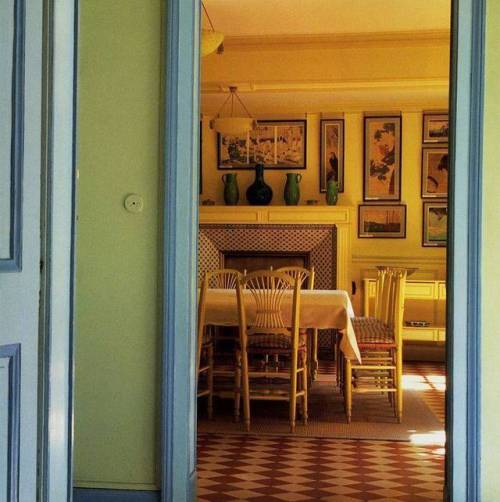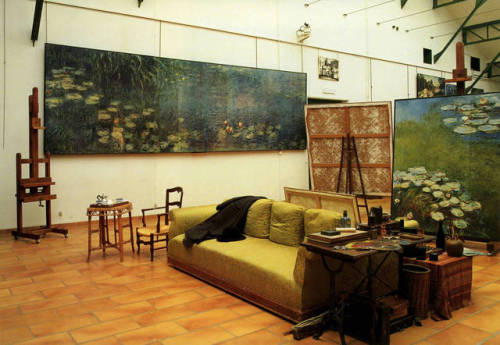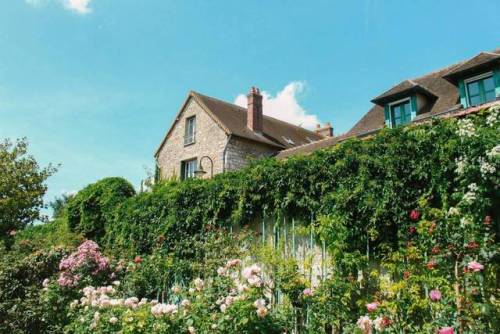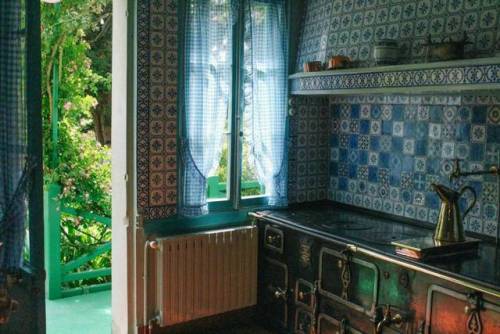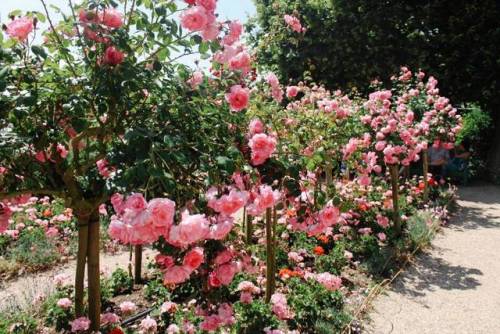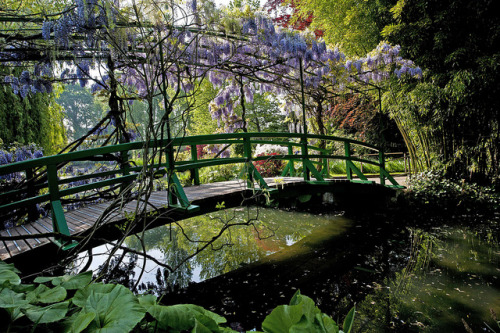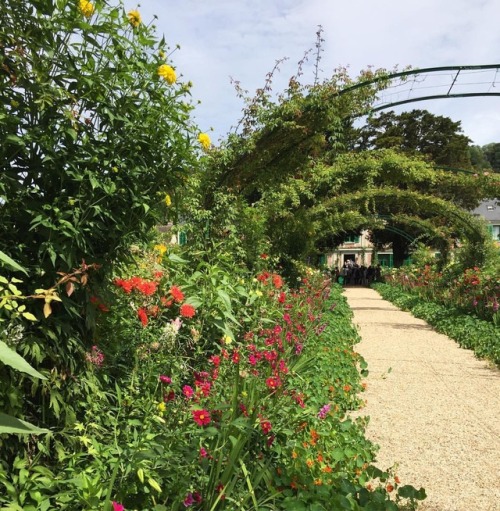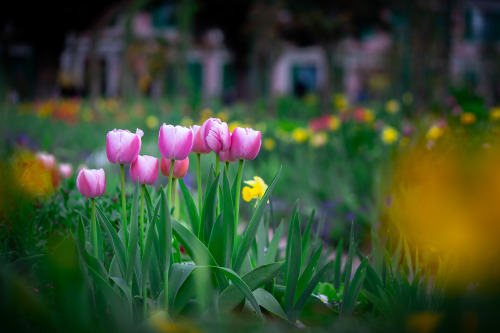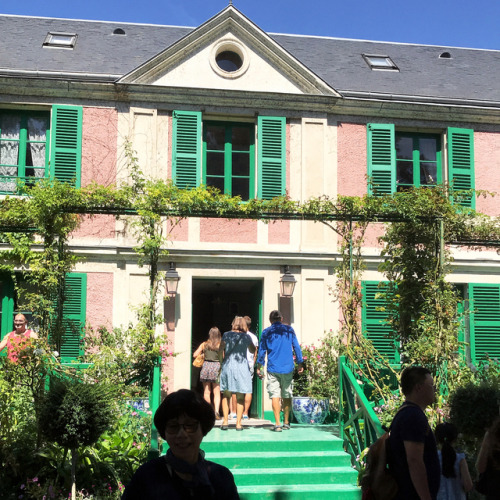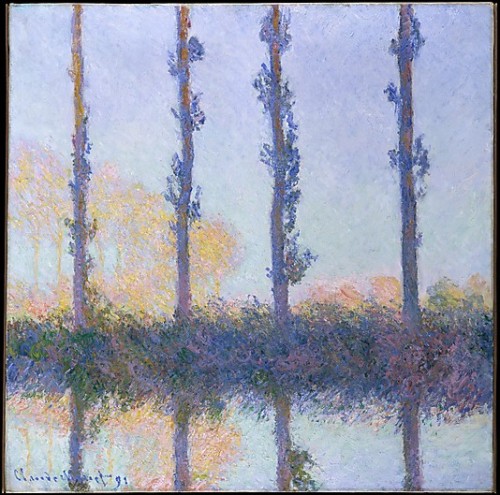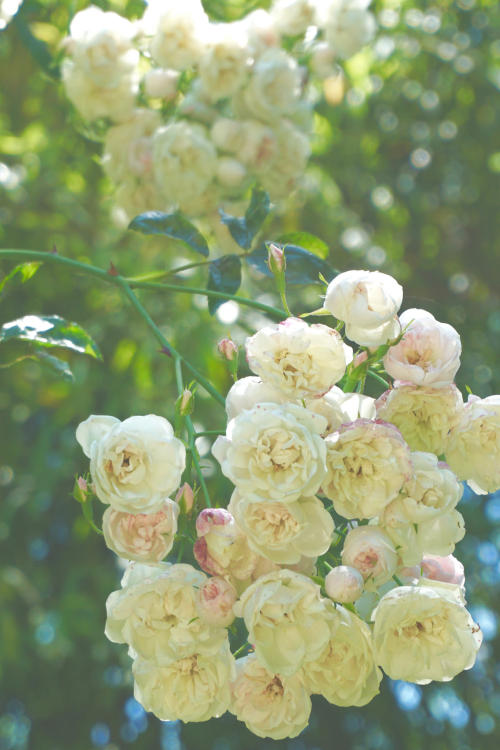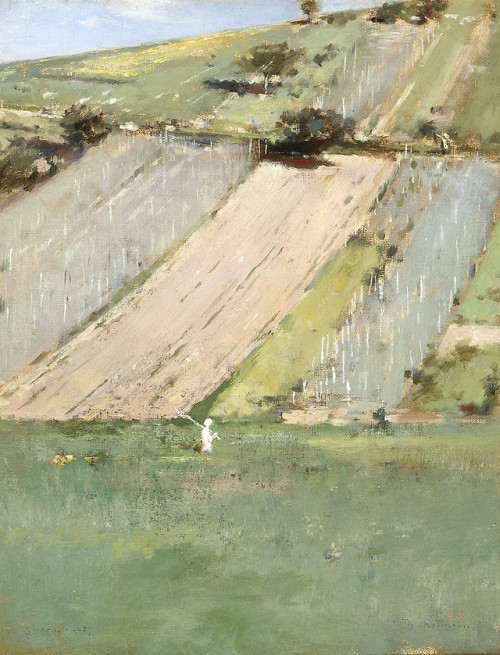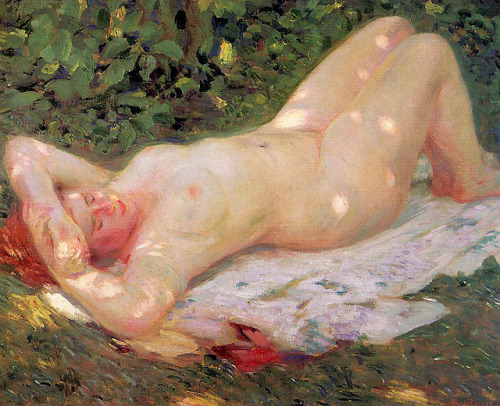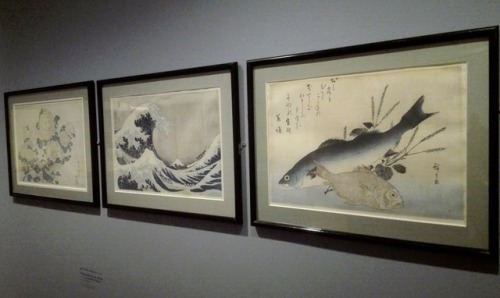#giverny

Claude Monet in his garden, 1905.
Claude Monet (1840-1926) - Nymphéas
Oil on canvas. Painted in 1907.
37 x 35.25 inches, 93.8 x 89.3 cm. Estimate: US$35,000,000-55,000,000.
Sold Christie’s, New York, 12 May 2022 for US$56,495,000 incl B.P.
Part of the Anne H. Bass Collection.
Anne Hendricks Bass (1941-2020) was a philanthropist and arts patron and former wife of the Texas oil billionaire Sid Bass. The twelve works in this sale include three Monets, two Rothkos, and a pastel, an oil and a sculpture by Degas. All adorned her 5th Avenue New York apartment. They have a combined estimate of between US$243-361 million. All lots sold for a buyer’s premium-inclusive total of US$363,087,500.
The 136-page catalogue (144.4 MB) is available as a free pdf. Lots of informative text, supporting photos of other works of art, and the collection in situ in her residence. Simply pop the following into a new window:
dubdubdubdot christies.com/PDF/catalog/2022/NYR21517_SaleCat.pdf
Post link
Giverny with only 1/1600 of the beautiful flowers! | #Giverny #Travels #Excursions #ClaudeMonet #LittleGirlMemories @margarita.pagliai #TBT (at Fondation Monet in Giverny)
Post link
“If water derives lucidity from stillness, how much more the faculties of the mind! The mind of the sage, being in repose, becomes the mirror of the universe, the speculum of all creation.”
~ Chuang Tzu
[Water Lilies, 1917 - 1919 - Claude Monet]
• Zhuangzi (Chuang-tzu 莊子 “Master Zhuang” late 4th century BC) is the pivotal figure in Classical Philosophical Daoism. The Zhuangzi is a compilation of his and others’ writings at the pinnacle of the philosophically subtle Classical period in China (5th–3rd century BC). The period was marked by humanist and naturalist reflections on normativity shaped by the metaphor of a dào—a social or a natural path. More: https://plato.stanford.edu/entries/zhuangzi/
• “One instant, one aspect of nature contains it all,” said Claude Monet, referring to his late masterpieces, the water landscapes that he produced at his home in Giverny between 1897 and his death in 1926. More: https://www.artic.edu/artworks/16568/water-lilies
Post link
Ian Pople
Summer dust settled over the garden
in bloom and full of bees, their hives
full of such marketable honey, you
bought a jar. Then, amid the light blue
and white of the ground floor, there was
the lemon-yellow room and the room
in two pale blues with a Hiroshige carp
and a falcon, its talons folded under
because the hands were difficult, though
worked on over some days, and the neck
difficult, the edges of the object fleeing
toward the horizon, fleeing the unity
of flesh and (that word again!) spirit; so,
perhaps it was easier to leave the eyes out
altogether, as in the small Cézanne upstairs,
where the face is wide and slightly empty.
The features caught in the shadow of an
overhang. Outside the leaves fell from bamboo
in the Japanese water garden, leaves that
gathered light grey stripes upon light green stripes
and the stream that ran between pinioned banks,
as if we had opened a desk marked by all
who had used it, who had slept in its dust,
who had slept in the dew in the summer.
Sunspots by Lawton Parker, c. 1912.
In the spring, in the time before the massacre, the faithful made the great pilgrimage to Giverny, where the Seine meets the Epte River, to praise the flowers and worship the light.
It was Claude Monet who had seen this land of promise, from his railway car in 1883, when the Belle Epoque was too green to have a name. He built his settlement in Giverny, dreaming into the world his jardin remarquable of brick walls adorned with blooming vines and tulips in their thousands planted in carefully cultivated rows.
A decade later, emboldened by sales of his paintings, Monet bought vacant land across the road and baptized it as a pond by diverting a tributary of the Epte. It was there he cultivated his water lilies and mingled art into nature, nature into art.
Lawton Parker’s first pilgrimage to Giverny may have been in 1903, when he was 35, but it was later than that, when the Belle Epoque seemed immortal, that this American disciple worshiped at the shrine with all his heart. He witnessed the light as it made gold of the green leaves and marveled at how it danced across the surface of warm skin, unclothed, the innocence of the human form.
What sin of man could be so horrific as to sink this Eden to grief?
When the massacre started Parker returned to Chicago, where he’d kept a home since 1901. He hosted salons, taught young artists. He continued to win prizes for his paintings, but they also brought scandal: luminous nude bodies, sun-dappled and shameless–in a fallen world, they were emblems of vice. Conservative museums, including the Art Institute, refused to display his work. Parker left for New York in 1916.
On the canvass, he always retained his impressionist devotions, but war ruptured the conjoining of nature and art, leaving an incurable wound, bloody, pus-filled and gangrene.
Parker faded as the light at the end of the day. The chaos of expressionism, modernism and surrealism provided no sanctuary for a person of faith.
He was just another old guy who’d retired to Pasadena when his heart stopped beating in 1954.
They were pipes of pagan mirth,
And the world had found new terms of worth.
He laid him down on the sun-burned earth
And raveled a flower and looked away–
Play? Play?–What should he play?
- Robert Frost
Post link
If there’s one thing I have learned through taking art history, it is that you can never rule out an artistic movement. As a young artist, I would always say that I did not like impressionism. I thought it was disorganized and rushed, unappealing to the viewer, and I could not understand why people liked it so much. Upon studying it, I began to understand it a little bit better. Impressionism was a groundbreaking movement in art. There was nothing like it when it came to be, and it was one of the most controversial movements in art history. The movement focuses on light, color, and the fleeting moments of everyday life.
This week, I got the opportunity to visit Giverny, the hometown of Claude Monet. Prior to my visit, I was not a fan of Monet’s work. Being the art snob that I know I am, I thought to like Monet was too “mainstream”. The waterlilies didn’t impress me, and his haystacks could put me to sleep.
My, how things have changed

Walking through the home and gardens of Claude Monet was surreal, and nearly moved me to tears. Not only was his house my dream house, I immediately understood why he was so inspired by this property. The pond and gardens feel like a fairytale, and weaving through the paths and bridges felt like instant therapy, enough so to distract me from the throngs of tourists pushing me along.
In my mind, it was just me, Monet, and the lilies. The colors began to decompose and separate like whole milk, and I could see the water like Monet had, bright and whimsical, strung together by confident brushstrokes. I was in awe. I finally got impressionism.

Monet’s home is covered with art. His studio is filled floor to ceiling with original pieces in various states of finish and refinement. The painting above was my favorite, and I bought a print of it on the way out.
The interior of the home is beautiful, with bright yellows, blues, and greens. The natural streamed in through lace curtains, casting perfectly abstract sunbeams on the floor and furniture. I danced around the home, dreaming about what life must have been within these walls, constantly surrounded by inspiration.

I’ve said it before, but I think I really mean it this time: this was the highlight of my trip so far. It was absolutely surreal, and I left with a much higher appreciation for impressionism and art as a whole. I hope to someday achieve the level of inspiration that Monet had access to literally in his own backyard. I feel so fortunate to have seen it myself.



